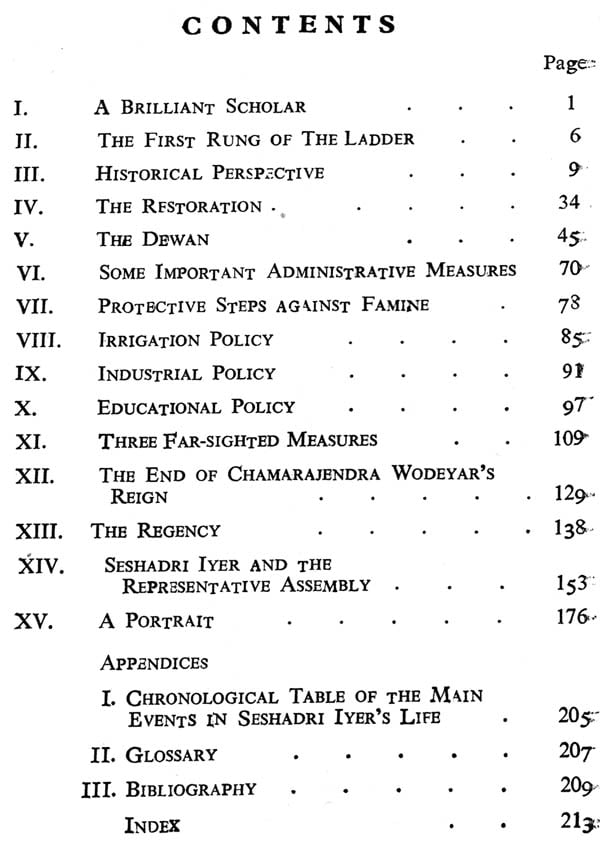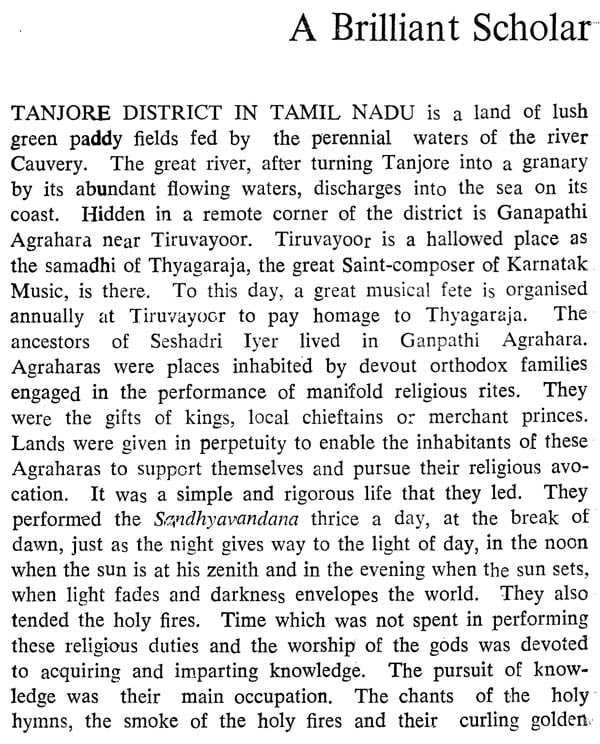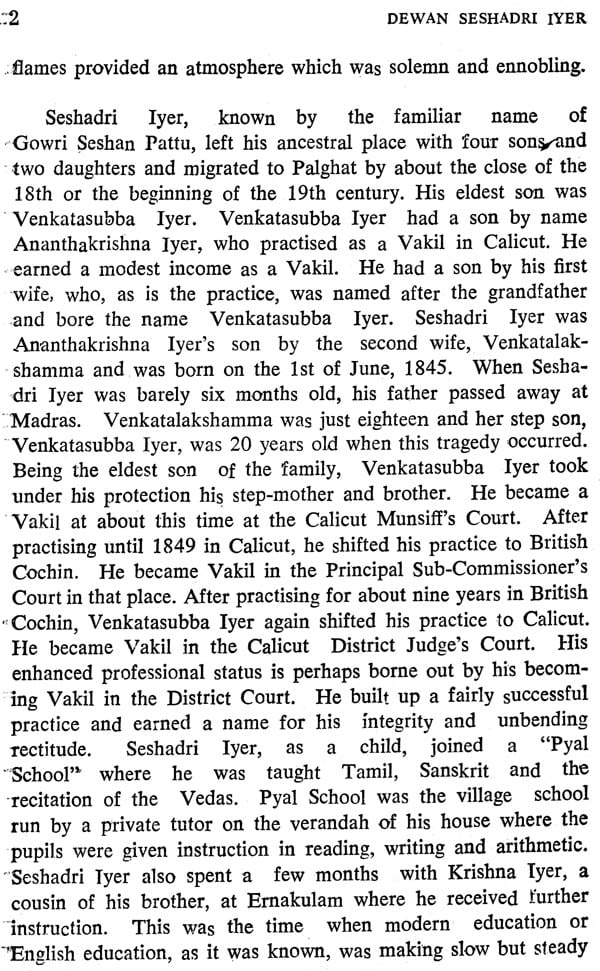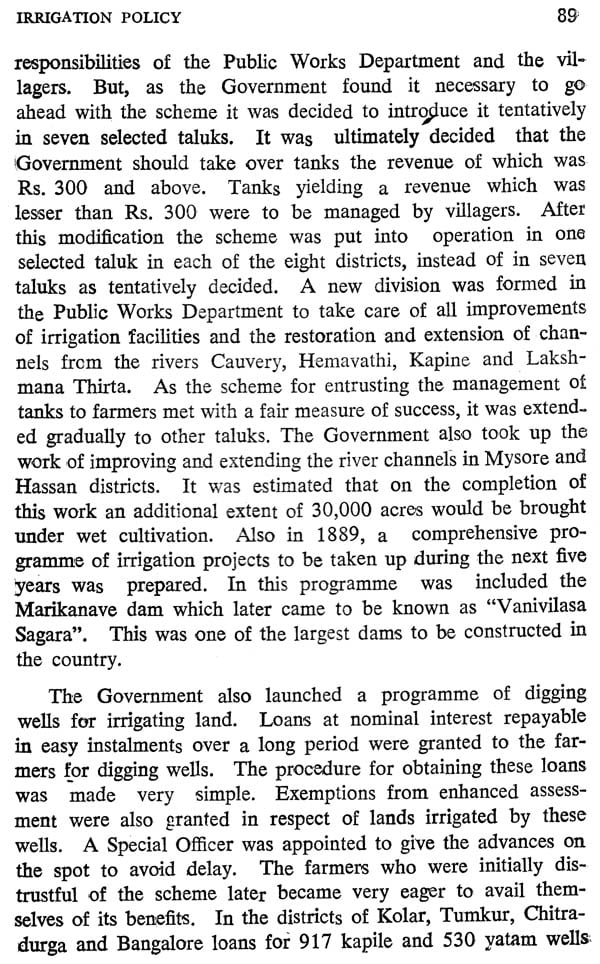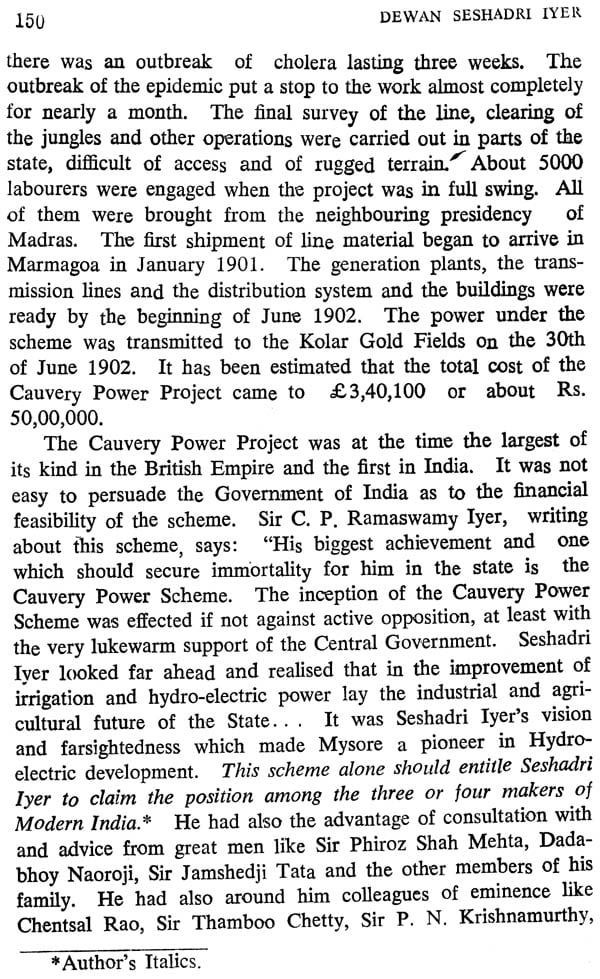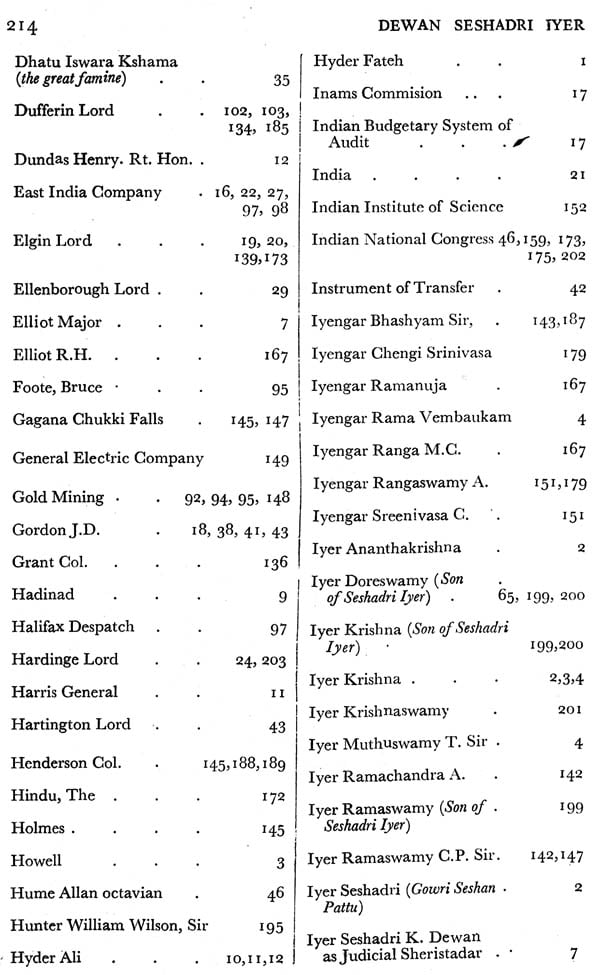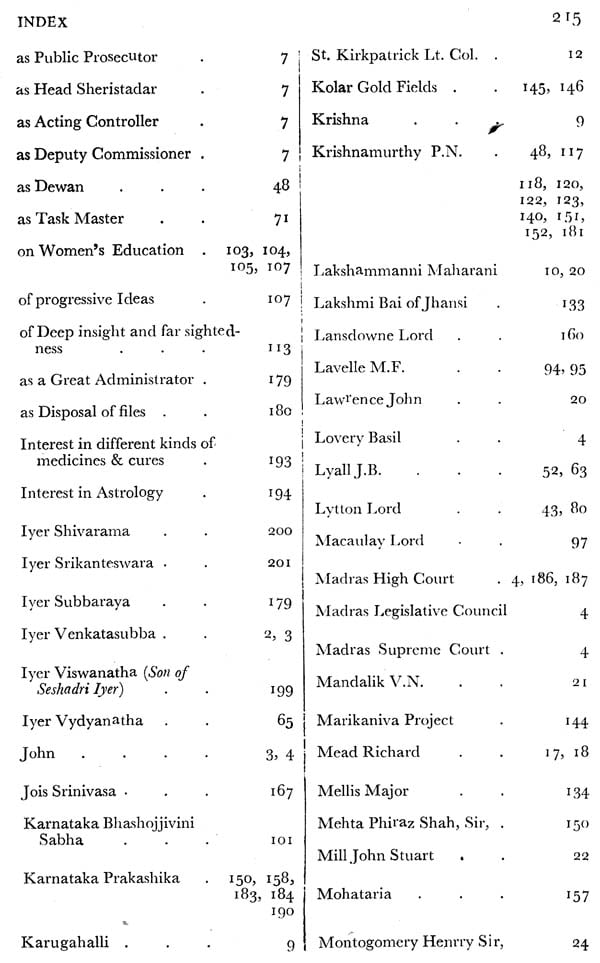
Dewan Seshadri Iyer - Builders of Modern India ( An Old and Rare Book )
Book Specification
| Item Code: | NAU674 |
| Author: | N.S. Chandrasekhara |
| Publisher: | Publications Division, Government of India |
| Language: | English |
| Edition: | 1981 |
| Pages: | 220 |
| Cover: | PAPERBACK |
| Other Details | 8.00 X 6.00 inch |
| Weight | 340 gm |
Book Description
The object of this series is to record for the present and ‘future generations, the story of the struggles and achievements of those eminent sons and daughters of India who have been mainly instrumental for our national renaissance and the attainment of independence. Except in a few cases, such authoritative biographies have not been available.
The biographies are planned as handy volumes written ‘by knowledgeable persons and giving a brief account, in simple words, of the lives and activities of the eminent leaders and of their times. They are not intended either to be comprehensive -Studies or to replace the more elaborate biographies.
The work of writing these lives has to be entrusted to ‘different persons. It has, therefore, not been possible to publish the biographies in a chronological order. It is hoped, ‘however, that within a short period all eminent national personalities will figure in this series, Shri R. R. Diwakar is the General Editor of the series.
Kumarapuram Seshadri Iyer was the Dewan of Mysore for 18 years, a record unequalled in the annals of modern Mysore. He succeeded Rangacharlu, the first Dewan of the princely State after its Restoration to Maharaja Chamarajendra Wodeyar in 1881. Rangacharlu carved out for himself a permanent place in the history of Mysore during his short tenure of less than two vears as the Chief Minister of the State. A man of vision, of spotless integrity and unblemished character he dedicated himself to the service of his adopted land and the welfare of its people. Father of the Representative Assembly, the fore-runner of representative institutions in the country, a great administrator and a consummate master of public finance, he left his mark on every branch of administration. Whoever succeeded him inevitably suffered from the inescapable disadvantage of being compared with him. He cast a long shadow within the shades of which it was not easy for any successor to tread. Moreover, Seshadri Lyer was the protege of Rangacharlu. He owed his advent in the Mysore Service, his rapid advance in it and his eventual accession to the high office of Dewan to Rangacharlu.
When Seshadri Iyer took up the reins of administration Mysore had not recovered from the devastation caused by the famine of 1876-78, the most terrible in living memory. The State finances were low, its economy still lay shattered, and the future of the princely house which had been restored to its ancient: domain very much depended on how the State was steered during this critical period. Seshadri Iyer was. only thirty-eight years and had held the office of the head of a district, when he was appointed Dewan. He faced fierce and sustained opposition, particularly embittered, because he was regarded as an outsider. By the time he laid down the office of Dewan, Mysore was perhaps the foremost Indian State, with its finances sound, its economy not only rebuilt but prosperous, its administration not only a model to other Princely States but even to the British Indian provinces in certain respects. He was recognised as one of the’ greatest administrators that this country had produced. The task that I have set for myself, of recreating’ his times and of giving an account of his life and. achievements has not been an easy one. No doubt. the official chronicles and gazettes contain a fairly full and accurate account of the economic, social and: political conditions of his times. But the stuff of biography is woven cut of the memorabilia of the subject and of his contemporaries of the accounts given of him where he moved, lived and acted. Materials of this kind are far too scanty. Even when they are available to some extent, they are more often than not denied to the biographer. The issues of "Karnataka Prakashika" have been source material of inestimable value, The yellowing, and fragile pages of this Journal have been preserved by "The Gokhale Institute of Public Affairs". Its views of Seshadri Iyer and his administration afford a poignant glimpse of the bitter -factionalism that prevailed during those days. It also, perhaps, reveals that being a contemporary is not an altogether unmixed blessing. Seshadri Iyer who has cast such a long shadow and whose greatness, the passage of time has nct only left undimmed but enhanced, appears in the columns of this journal as a none too admirable figure.
